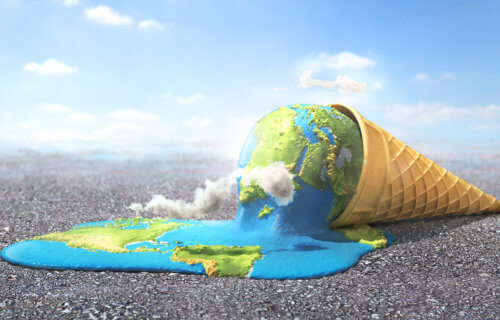READING, England — A recent study reveals the ozone may be heating Earth more than we realize. An international team of researchers say changes to the upper and lower atmosphere ozone levels were responsible for nearly a third of the warming seen in ocean waters bordering Antarctica in the second half of the 20th century.
The warming was caused by ozone increases in the lower atmosphere. Ozone is a dangerous pollutant and research shows it may play a significant role in driving climate change in the years to come.
“Ozone close to Earth’s surface is harmful to people and the environment, but this study reveals it also has a big impact on the ocean’s ability to absorb excess heat from the atmosphere,” says Dr. Michaela Hegglin, study author and associate professor in atmospheric chemistry, in a statement. “These findings are an eye-opener and hammer home the importance of regulating air pollution to prevent increased ozone levels and global temperatures rising further still.”
Researchers analyzed models to simulate changes in ozone levels in the lower and upper atmosphere between 1955 and 2000. The team then isolated them from other influences and increased the currently poor understanding of their impact on the Southern Ocean heat uptake.
Study authors found the upper two kilometers of the ocean water warming in the high latitudes due to both a decrease in ozone in the upper atmosphere and increase in the lower atmosphere. The increased ozone in the lower atmosphere caused 60% of the overall ozone-induced warming seen in the Southern Ocean over the period that was studied — much more than previously thought.
Researchers were surprised “because tropospheric ozone increases are mainly thought of as a climate forcing in the Northern hemisphere since that is where the main pollution occurs.”
“We have known for a while that ozone depletion high in the atmosphere has affected surface climate in the Southern Hemisphere. Our research has shown that ozone increases in the lower atmosphere due to air pollution, which occurs primarily in the Northern Hemisphere and ‘leaks’ into the Southern Hemisphere, is a serious problem as well,” explains Dr. Hegglin.
The ozone first came to public light in the 1980s when a hole was discovered in the ozone layer in the atmosphere over the South Pole. The damage was caused by chlorofluorocarbons, a gas used in industry and consumer products. The ozone layer filters hazardous ultraviolet radiation from reaching Earth’s surface.
The study is published in the journal Nature Climate Change.

Could means could , but maybe not, so….
Don’t Electric Motors generate Ozone? Perhaps Electric Vehicles are not without risk to the Climate. Should we be looking for yet another way to cut down on Climate Change antagonists?
Funny how this just came out after the Supreme Court dismantled the EPA .